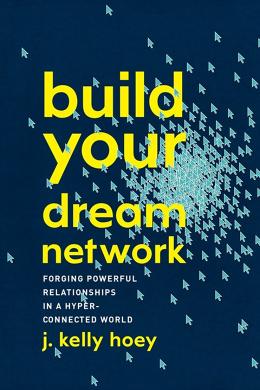A successful crowdfunding effort requires more than a sharp video and a bunch of tweets. It requires something decidedly low-tech: already having and tapping into a network.
That’s something even the savviest entrepreneurs often get wrong. Whether it’s Kickstarter, Indiegogo, GoFundMe, or any of the other thousands of sites out there, no crowdfunding platform can source funders or market a new product or service all on its own. The crowdfunding campaign can do that, but the platform can’t.
It’s a subtle yet crucial distinction—and one reason so many crowdfunding efforts fall flat. The sole purpose of the platform itself is to facilitate payments! The rest of it is good, old-fashioned networking. Here’s how to get it right.
What Asking For Money More Often Leads To
In the final week of their crowdfunding campaign, the founders of a social-commerce fashion company emailed me. The startup, founded by college classmates, focused on bringing chic, ethically made ready-to-wear products to market. The founders decided to crowdfund the $10,000 dollars they needed to produce the first collection, made from artisan-designed fabrics. They were falling short of their funding target and, in desperation, had begun to reach out to complete strangers for help (and money).
I suspected right that the startup hadn’t done everything it could to connect its existing networks to its fundraising efforts. There’s a saying in the startup community: When you ask for money, you get advice, and when you ask for advice, you get money. You know where this is headed.
As much as I’m sure they appreciated my advice, these founders were really seeking a donation—sprinkled with a little social influence. Here’s the advice I gave them to get their crowdfunding effort over the funding-success line. (They ultimately raised the $10,000 they needed from 32 funders.)
Tap Into The Networks You Already Have
I quickly concluded that this founding team was not lacking in networks to tap into: The core team consisted of six people with professional experience in fashion, higher education, banking, not-for-profit, and tech startups. The key to fundraising success is to ask and activate existing networks.
These founders had overlooked the large, diverse network they already had at their fingertips. To reach their funding goal, they simply had to communicate their need to their existing network! Ultimately, the challenge in the remaining days of the crowdfunding campaign was to come up with a three-part communications strategy to quickly reach a wider network of potential funders/donors sourced exclusively from within their existing network:
- Reach out to overlooked contacts within the funding team’s existing networks and ask for financial support.
- Send additional communications to close contacts updating them on the campaign (and funding goal).
- Inspire contacts to share their support of the crowdfunding campaign with their friends and colleagues.
The Tool Is Only A Tool
Crowdfunding is an example of how people in your network can help you reach a goal, and how by focusing solely on the functionality of a tool or promise of technology you risk missing out on an achievable goal.
If you’re considering a crowdfunding campaign, remember that your success depends on mobilizing support from people who already know you. So before you start planning your campaign, get down to brainstorming, and don’t stop until you’ve managed to list all the networks you can possibly turn to for financial support.
Put your ego aside (you’re asking for money after all!) and be prepared to reach deep into your networks for help. Get creative about how you can activate those weak connections—like the second cousin you haven’t talked to since the last family reunion, or the boss from your job two summers ago.

Then plan a 30-day communications strategy—not just a day-of-launch strategy. Think of multiple ways to update your network (though emails, calls, Facebook posts) to keep them involved and supportive. Make sure you plan a post-campaign strategy, too; completing a crowdfunding campaign is just the first of many challenges your project faces, which you’ll need to keep this community active and energized with ongoing updates about your efforts.
On a practical note, especially if you’re building a lifestyle brand, keep in mind that it takes a lot of content and a whole lot of community—and a lot longer than a 30-day crowdfunding campaign—to captivate new hearts and minds.
Say Thanks, Then Keep Saying It
A final note: Throughout your campaign, make sure you acknowledge the support you’ve received from people in your network. Reach out to them individually and personally (whether it’s a phone call, a handwritten note sent by post, or a personalized electronic note using Red Stamp or Paperless Post).
Don’t leave the community cold once your crowdfunding campaign is over! These are the people you’ll need most once you’re ready to launch your product.
To keep them hooked, you need to continuously express your gratitude, and that can simply come in the form of updates on your progress, reminding them that they helped you get to each new milestone. After all, these people believed in you enough to rally behind you from the get-go. Make sure they know you’ll never forget it.
This article is adapted from Build Your Dream Network: Forging Powerful Relationships in a Hyper-Connected World by J. Kelly Hoey. It is reprinted with permission.
Fast Company , Read Full Story
(30)